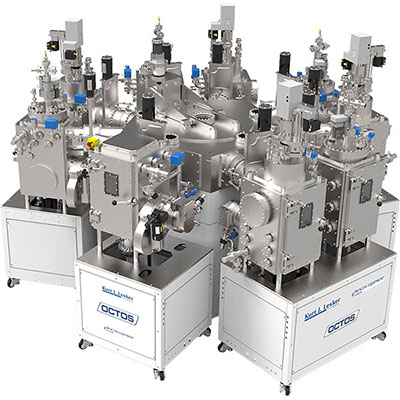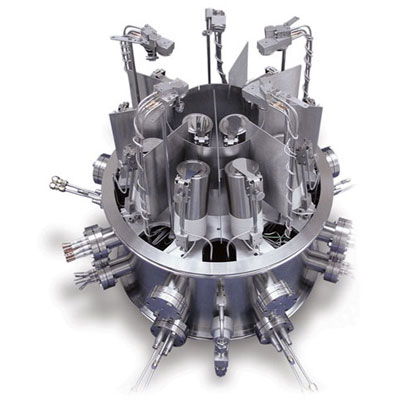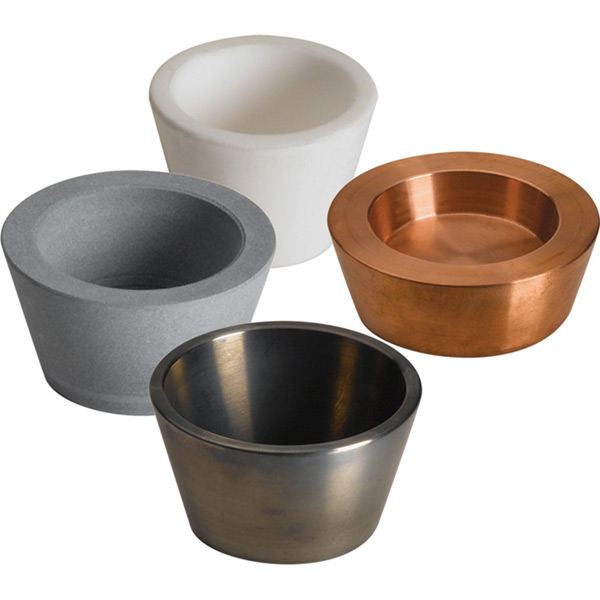Zirconium Oxide (ZrO2) Tablets Evaporation Materials
Zirconium Oxide (ZrO2) Tablets Overview
We sell these pellets and pieces by unit weight for evaporation use in deposition processes. These approximate materials prices are published to provide budgetary guidelines. Actual prices can vary and may be higher or lower, as determined by availability and market fluctuations. To speak to someone directly about current pricing, please click here .
Zirconium Oxide (ZrO2) General Information
Zirconium oxide is a chemical compound with a chemical formula of ZrO2. It is often referred to as zirconia. It is white in appearance with a melting point of ~2,700°C, a density of 5.89 g/cc, and a vapor pressure of 10-4 Torr at ~2,200°C. Due to its resistance to cracks, zirconium oxide is heavily utilized for ceramic production. Cubic zirconia, which is zirconium oxide in cubic crystalline form, is sold by jewelers as a low-cost alternative to diamonds. Zirconium oxide is evaporated under vacuum for optical coatings, semiconductors, and fuel cells.
Zirconium Oxide (ZrO2) Specifications
| Material Type | Zirconium Oxide |
| Symbol | ZrO2 |
| Color/Appearance | White, Solid |
| Melting Point (°C) | ~2,700 |
| Theoretical Density (g/cc) | 5.89 |
| Z Ratio | **1.00 |
| E-Beam | Good |
| Thermal Evaporation Techniques |
Boat: W |
| E-Beam Crucible Liner Material | Graphite, Tungsten |
| Temp. (°C) for Given Vap. Press. (Torr) | 10-4: ~2,200 |
| Export Control (ECCN) | 1C234 |
| Comments | Films oxygen deficient, clear and hard. |
| Suggested QCM Crystal | Alloy Crystal: 750-1002-G10**** |
** The z-ratio is unknown. Therefore, we recommend using 1.00 or an experimentally determined value. Please click here for instructions on how to determine this value.
**** Suggestion based on previous experience but could vary by process. Contact local KJLC Sales Manager for further information
Empirical Determination of Z-Factor
Unfortunately, Z Factor and Shear Modulus are not readily available for many materials. In this case, the Z-Factor can also be determined empirically using the following method:
- Deposit material until Crystal Life is near 50%, or near the end of life, whichever is sooner.
- Place a new substrate adjacent to the used quartz sensor.
- Set QCM Density to the calibrated value; Tooling to 100%
- Zero thickness
- Deposit approximately 1000 to 5000 A of material on the substrate.
- Use a profilometer or interferometer to measure the actual substrate film thickness.
- Adjust the Z Factor of the instrument until the correct thickness reading is shown.
Another alternative is to change crystals frequently and ignore the error. The graph below shows the % Error in Rate/Thickness from using the wrong Z Factor. For a crystal with 90% life, the error is negligible for even large errors in the programmed versus actual Z Factor.

Thermal Evaporation of Zirconium Oxide (ZrO2)
Thermal evaporation is not recommended for depositing zirconium oxide films. The temperatures required to reach a reasonable deposition rate will likely exceed those acceptable in most vacuum chambers. E-beam evaporation is the recommended method to deposit zirconium oxide films.
If thermal evaporation is the only option, we would recommend a thick-gauged tungsten boat like our EVS20A015W. Pressure should be monitored to ensure outgassing is at an acceptable level before increasing power. With an evaporation temperature of ~2,200°C, we anticipate a deposition rate of 1-2 angstroms per second. A partial pressure of O2 at 8-10 X 10-5 Torr is recommended.
E-beam Evaporation of Zirconium Oxide (ZrO2)
E-beam evaporation is the preferred method to deposit zirconium oxide films. We recommend using a graphite or tungsten crucible liner.
We recommend sweeping the e-beam at low power and avoid hole drilling. Pressure should be monitored to ensure outgassing is at an acceptable level before increasing power. If possible, Ion Assisted Deposition (IAD) is preferred. With an evaporation temperature of ~2,200°C, we anticipate a deposition rate of 1-2 angstroms per second. A partial pressure of O2 at 8-10 x 10-5 Torr is recommended. Under these parameters, we expect dense, hard, scratch-resistant films with good adhesion.
Another key process note is to consider the fill volume in the e-beam application because we find that the melt level of a material in the crucible directly affects the success of the crucible liner. Overfilling the crucible will cause the material to spill over and create an electrical short between the liner and the hearth. The outcome is cracking in the crucible. This is the most common cause of crucible liner failure. Placing too little material in the crucible or evaporating too much material before refilling can be detrimental to the process as well. When the melt level is below 30%, the e-beam is likely to strike the bottom or walls of the crucible which immediately results in breakage. Our recommendation is to fill the crucible between 2/3 and 3/4 full to prevent these difficulties.
Crucible liners should be stored in a cool, dry place and always handled with gloves or forceps.
See highlighted results that match your result in the table below.
Ordering Table
| More Info | Material | Description | Size | Quantity | Purity | Part Number | Price | In Stock | Add To Cart |
|---|---|---|---|---|---|---|---|---|---|
| More Info | Material | Description | Size | Quantity | Purity | Part Number | Price | In Stock | Add To Cart |
| Zirconium Oxide |
EUDF ZIRCONIUM OXIDE TABLETS, |
18mm Dia. x 8mm Thick, Black | 1 kg | 99.9% | EVMZRO18MMB | P.O.R. |
|
||
| Zirconium Oxide |
EUDF ZIRCONIUM DIOXIDE TABLETS, |
18mm Dia. x 8mm Thick, White | 1 kg | 99.9% | EVMZRO18MMW | P.O.R. |
|







